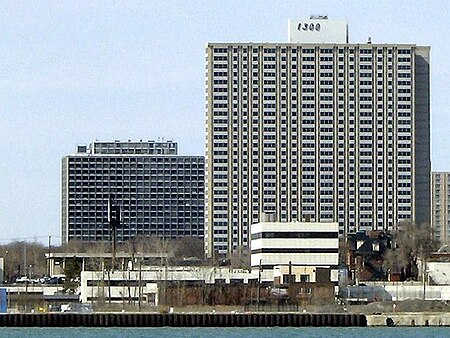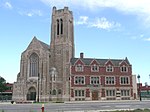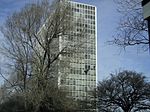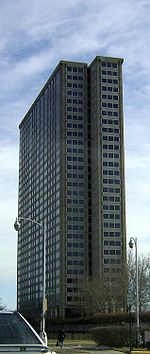Lafayette Pavilion Apartments

The Lafayette Pavilion Apartments is the name of a high-rise residential apartment building in Detroit, Michigan. It is located at 1 Lafayette Plaisance, near Gratiot Avenue and I-375, near Chene Park. Construction began in 1955 and was completed in 1958. The building, whose exterior was constructed primarily of aluminum and glass, is 22 floors in height, and was designed in the international architectural style. The Lafayette Pavilion Apartments are one of four towers in the Lafayette Park development. The other three are the Windsor Tower, and the Lafayette Towers Apartments. Along with the other neighboring Ludwig Mies van der Rohe-designed buildings, this building was added to the National Register of Historic Places in 1996.
Excerpt from the Wikipedia article Lafayette Pavilion Apartments (License: CC BY-SA 3.0, Authors, Images).Lafayette Pavilion Apartments
Lafayette Plaisance Street, Detroit
Geographical coordinates (GPS) Address Phone number Website Nearby Places Show on map
Geographical coordinates (GPS)
| Latitude | Longitude |
|---|---|
| N 42.3402 ° | E -83.037 ° |
Address
The Pavilion Apartments
Lafayette Plaisance Street 1
48207 Detroit
Michigan, United States
Open on Google Maps










